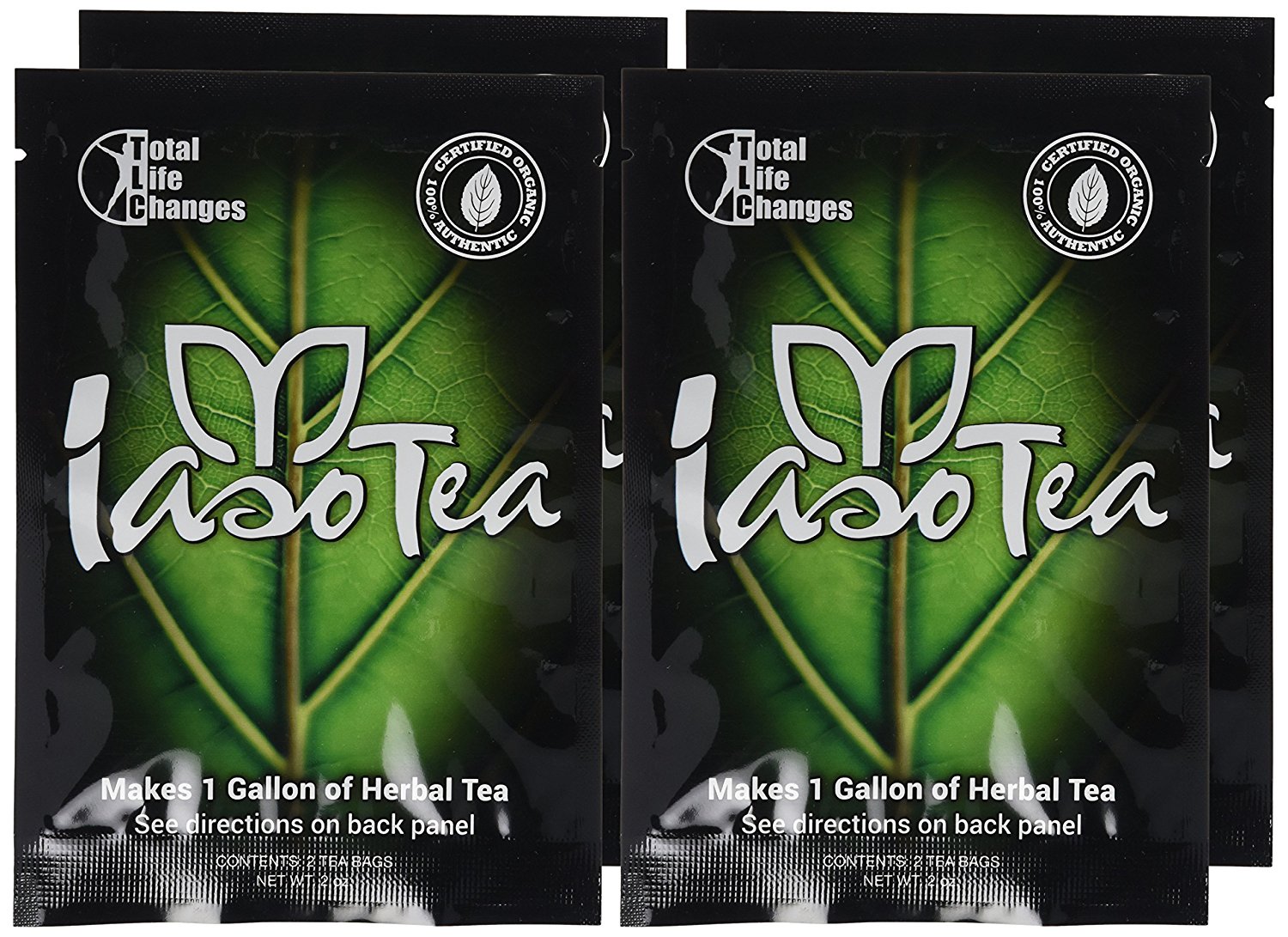
Here is an honest review based on my own experiences using the tea and how it worked for me.
First we will start with the function and content of the product to help give you a better understanding of the tea and what it promises and what my experiences were while using it so that you can make an informed decision on whether you would like to use this product or not. Please note that my review is based solely on my own experiences and opinions on this product. You may or may not have the same experience as I have, every body reacts differently to different things.
How do I use this product?
As per package information:
- Bring 1L of water to a rolling boil (do not microwave)
- Add 2 teabags to the water and cover
- Remove from heat and let steep for 4 to 8 hours
- combine steeped tea with 3L of cold water to make 1 Gallon (4L) of tea. do not remove teabags. refrigerate.
Recommended usage:
- Drink one 8oz. (240ml) glass with lunch
- Drink one 8oz. (240ml) glass with dinner
- Drink one 4oz. (120ml) glass with a snack (optional)
After drinking the tea, save the tea bags, dry the tea herbs and add to any foods e.g: Soups, stews, sauces, salads, potatoes etc.
Warnings:
This product contains cathartic (laxative) herbs. Pregnant and nursing mothers, the elderly, children and individuals suffering from any illness or health condition should consult with a physician prior to using this or any herbal supplement.
Statements regarding the effects of this product have not been evaluated by the food and drug administration. This product is not intended to diagnose, treat, cure or prevent any disease.
How do I use this product?
As per package information:
- Bring 1L of water to a rolling boil (do not microwave)
- Add 2 teabags to the water and cover
- Remove from heat and let steep for 4 to 8 hours
- combine steeped tea with 3L of cold water to make 1 Gallon (4L) of tea. do not remove teabags. refrigerate.
Recommended usage:
- Drink one 8oz. (240ml) glass with lunch
- Drink one 8oz. (240ml) glass with dinner
- Drink one 4oz. (120ml) glass with a snack (optional)
After drinking the tea, save the tea bags, dry the tea herbs and add to any foods e.g: Soups, stews, sauces, salads, potatoes etc.
Warnings:
This product contains cathartic (laxative) herbs. Pregnant and nursing mothers, the elderly, children and individuals suffering from any illness or health condition should consult with a physician prior to using this or any herbal supplement.
Statements regarding the effects of this product have not been evaluated by the food and drug administration. This product is not intended to diagnose, treat, cure or prevent any disease.
Composition:
Persimmon leaf
Noted for its use in China, Japan and Korea, for centuries to brew a body beneficial tea.
According to multiple sources the Chinese Academy of the Sciences found that this particular tea contains a large variety of Vitamin C, tannins, flavonoids, rutin, choline carotenoids, amino acids. In addition, the tea was found to contain 10 elements: Magnesium, Manganese , titanium, calcium , phosphorous, and more. These elements are found to aid to healthy bodily functions. Compared to other teas, persimmon leaf tea contains a higher level of health and nutritional benefits. Analysis has shown persimmon leaf tea contains up to 10 times the amount of Vitamin C, tannins, flavonoids, rutin, choline and essential amino acid(Study conducted 1980. CAS). A Korean Study concluded that persimmon tea contains 3.5~20.8 times more vitamin C than green tea!
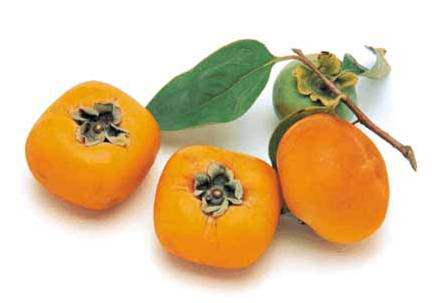
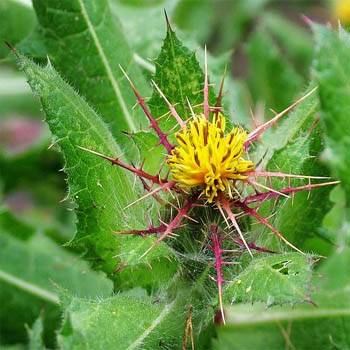
Blessed Thistle
Also known as Holy Thistle or St. Benedict’s Thistle was given this name due to its reputation as a cure-all. It’s Latin name, Cnicus Benedictus, was given because its ability to cure was considered a gift from God. It is perhaps most well known for its usage with female related problems, though it should not be used during pregnancy. It can be found and used in tinctures, capsules, or teas. Blessed Thistle is often used in teas for nursing mothers to help increase milk supply. It is known to increase circulation and treat hormone imbalance. It enhances memory by delivering oxygen to the brain and is supportive of the heart and lungs.
Due to its ability to act on the endocrine system, it is important to check with a doctor or healthcare practitioner before using this herb. Large doses are said to have an emetic (a medicine or other substance which causes vomiting)and expectorant effect. Thistle contains bitter glycosides that may help stimulateappetite and act as a tonic to the digestive tract. Historically, large doses were used as a diaphoretic (inducing perspiration) and for general stimulant action.
In more recent times, thistle has received a reputation for its action on the internal organs such as the liver and kidneys. Homeopaths have touted it most highly in this regard and use a tincture for jaundice, hepatitis, and arthritis and it is often included in homeopathic formulas.
Malva Leaf
Other Names:
Blue Mallow Flower, Blue Malva, Cheeseflower, Common Mallow, Dwarf Mallow, Fromagère, Grande Mauve, Gul-Khair, High Mallow, Kunzi, Malva mauritiana, Malva neglecta, Malva rotundifolia, Malva Silvestre, Malva sylvestris, Malvae Flos, Malvae Folium, Mauls, Mauve, Mauve des Bois, Mauve à Feuilles Rondes, Mauve Négligée, Mauve Sauvage, Mauve Sylvestre, Vilayatiikangai.
Malva sylvestris is a species of the Mallow genus. It’s also called “common mallow” and “high mallow” or “tall mallow.” Pretty, bright, and typically some shade of purple, it’s long been used as an emollient (having the quality of softening or soothing the skin.) Today, malva has found new popularity as a soothing and softening ingredient in sensitive skin formulations. Malva flowers make a great addition to many of our skin care products. This pretty flower produces a great moisturizer for sensitive skin.
Malva has a reputation for being soothing because its leaves contain a high level of plant “mucus,” making them perfect for use in a tea to soothe bronchitis, emphysema, sore throat, and cough. The tea also has a reputation for soothing stomach problems and calming intestinal inflammations, and is still used today to soothe these digestive and respiratory problems.
The leaves and flowers also contain tannins, flavonoids, and vitamin C, all protective antioxidants that can help strengthen the immune system. Traditional uses of the herb also include the treatment of gallstones, kidney stones, kidney inflammation, headaches, and toothaches.
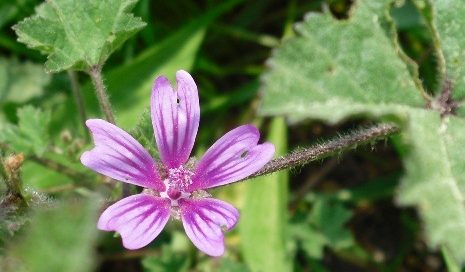
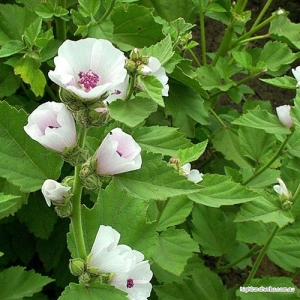
Marsh Mallow
Marshmallow is a plant. The leaves and the root are used to make medicine. Don’t confuse marshmallow with the mallow (Malva sylvestris) flower and leaf.
The leaf and root are used for pain and swelling (inflammation) of the mucous membranes that line the respiratory tract. They are also used for dry cough, inflammation of the lining of the stomach, diarrhea, stomach ulcers, constipation, urinary tract inflammation, and stones in the urinary tract.
People sometimes apply the leaf and root directly to the skin for pockets of infection (abscesses) and skin ulcers; and as a poultice (applied to the body to relieve soreness and inflammation and kept in place with a cloth.)for skin inflammation or burns, and for other wounds.
The leaf is also used topically as a poultice for insect bites.
The root is applied to the skin as an ingredient in ointments for chapped skin as well as for pain and swelling of the feet and hands due to exposure to the cold (chilblains). It forms a protective layer on the skin and lining of the digestive tract. It also contains chemicals that might decrease cough and help heal wounds.
Papaya
The leaf is rich in enzymes like papain and chymopapain, which aid digestion, prevents bloating and other digestive disorders. Apart from digestion, the strong alkaloid compounds work effectively against fighting dandruff and balding. Papaya leaves also contain high amounts of vitamins A, C, E, K, and B and minerals like calcium, magnesium, sodium magnesium and iron.
In some developing countries, the traditional use of papaya is being investigated as an alternative to standard treatments for a range of ailments. Papaya has a wide range of purported medicinal properties for treatment of diabetes, as birth control, as an antiseptic, antimicrobial, or diuretic, to control parasites, reduce inflammation, lower blood pressure, and lower cholesterol. While there is only limited data to support most of these uses, there is some evidence for healing bed sores and other wounds and in treating intestinal worms in humans.
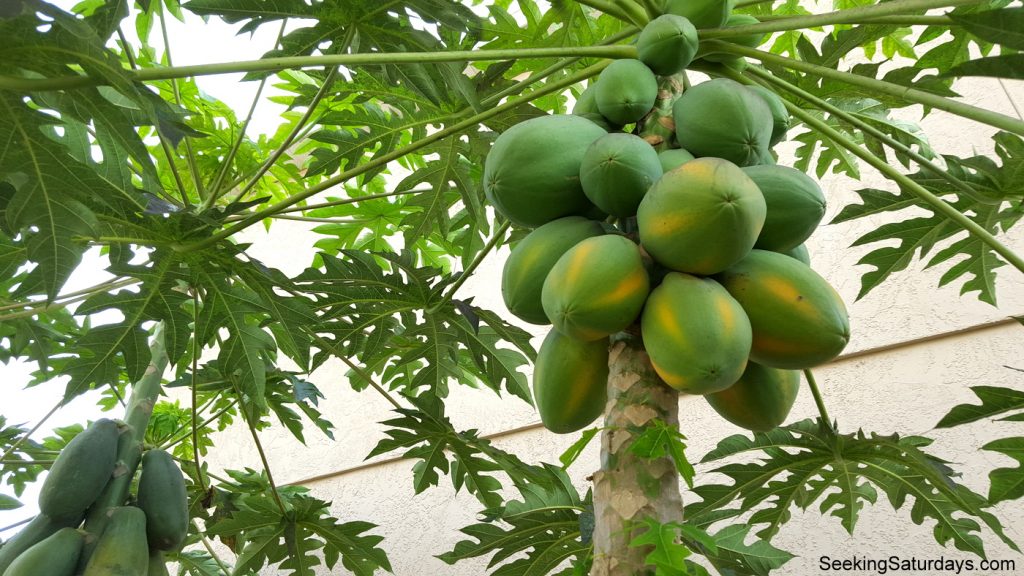
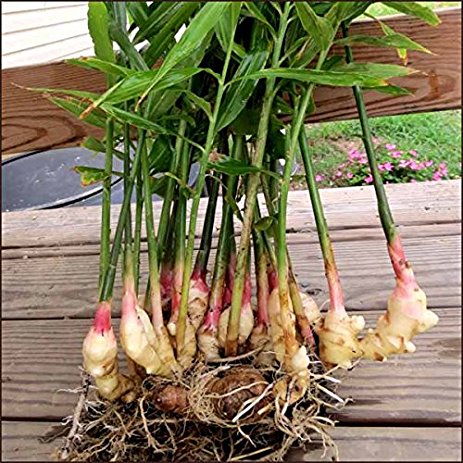
Ginger
Commonly used to treat various types of “stomach problems,” including motion sickness, morning sickness, colic, upset stomach, gas, diarrhea, irritable bowel syndrome (IBS), nausea, nausea caused by cancer treatment, nausea caused by HIV/AIDS treatment, nausea and vomiting after surgery, as well as loss of appetite. Other uses include pain relief from rheumatoid arthritis (RA), osteoarthritis, menstrual pain, upper respiratory tract infections, cough, respiratory problems, migraine headache, bronchitis, and diabetes.
Ginger is also sometimes used for chest pain, low back pain, and stomach pain, to stimulate breast milk, as a diuretic, and to increase sweating. It is also used to treat cholera, bleeding, bacterial bloody diarrhea, baldness, malaria, inflamed testicles, poisonous snake bites, and toothaches.
Ginger contains chemicals that may reduce nausea and inflammation. Researchers believe the chemicals work primarily in the stomach and intestines, but they may also work in the brain and nervous system to control nausea.
Chamomile
Commonly used as an aid for digestion. Individuals with gastrointestinal complaints relating to indigestion, colic, ulcers, diarrhea, irritable bowel syndrome and gastritis may benefit from drinking chamomile tea. In addition, drinking chamomile tea may help relieve menstrual cramps and tension headaches. Laboratory studies indicate that chamomile has antibacterial, antifungal, and antiviral properties.
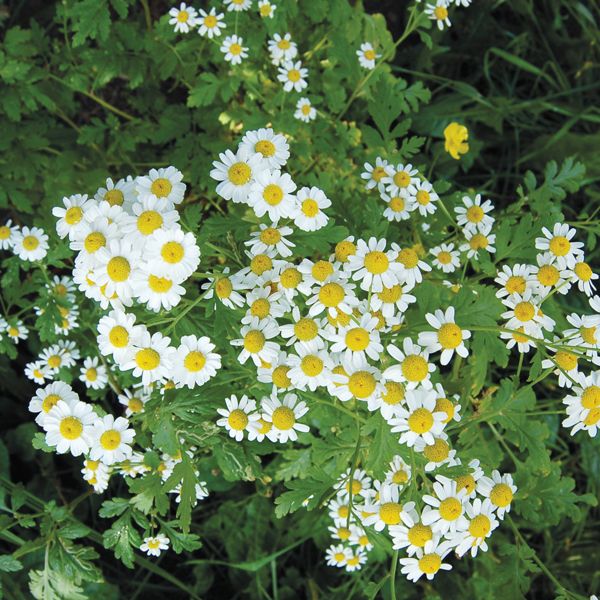
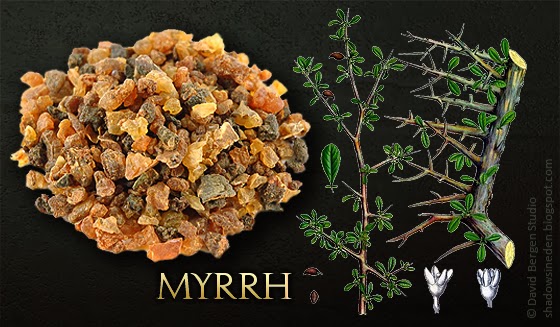
Myrrh
A sap-like substance (resin) that comes out of cuts in the bark of trees that are members of the Commiphora species. Commiphora mukul, a related species, is not a source of myrrh. Myrrh is used to make medicine.
Myrrh is used for indigestion, ulcers, colds, cough, asthma, lung congestion, arthritis pain, cancer, leprosy, spasms, and syphilis. It is also used as a stimulant and to increase menstrual flow. It is applied directly to the mouth for soreness and swelling, inflamed gums (gingivitis), loose teeth, canker sores, bad breath, and chapped lips. It is also used topically for hemorrhoids, bedsores, wounds, abrasions, and boils. In manufacturing, myrrh is used as a fragrance, in incense, and as a fixative in cosmetics. It is also used in embalming (preserve a corpse from decay. Yes you read that right!) It can also help decrease swelling (inflammation) and kill bacteria.
Side effects:
Blessed Thistle – There have been no reports of side effects or contraindications when blessed thistle is used properly. Pregnant women and people with stomach ulcers should avoid the herb. As with other bitter herbs blessed thistle taken at higher than recommended doses may cause irritation to the gastrointestinal tract that can lead to nausea, vomiting or diarrhea.
There is also a theoretical possibility that the herb can cause allergic reactions in people who are hypersensitive to other plants in the Asteraceae family (commonly referred to as the aster, daisy or sunflower family).
This includes plants like Arnica montana, chamomile, tansy and yarrow. Such allergic reactions are apparently very rare but can occur.
Persimmon leaf – No side effects – allergic reaction – extremely rare no specification.
Malva leaf – Avoid use if allergic or hypersensitive to any components of the plant species. Animal studies document that the plant may lower blood sugar levels; thus, use with caution in patients with diabetes or in those sensitive to changes in blood glucose levels.
Dermatitis – may cause dermatitis or irritation of the skin
Gastrointestinal side effects: Can cause nausea, bloating, stomach pain, gas, constipation or diarrhea.
Pregnancy/Lactation – Information regarding safety and efficacy in pregnancy and lactation is lacking.
Marshmallow – LIKELY SAFE for most people when taken by mouth. In some people, it might cause low blood sugar levels.
Pregnancy and breast-feeding: Not enough is known about the use of marshmallow during pregnancy and breast-feeding. Stay on the safe side and avoid use.
Diabetes: There is a concern that marshmallow might interfere with blood sugar control. If you have diabetes, check your blood sugar carefully to avoid dangerously low blood sugar.
Surgery: Marshmallow might affect blood sugar levels. There is a concern that it could interfere with blood sugar control during and after surgical procedures. Stop taking marshmallow at least 2 weeks before a scheduled surgery.
Papaya – may cause severe allergic reactions and is therefore contraindicated in sensitive people.
Papaya may cause severe allergic reactions in sensitive people. Papaya juice and papaya seeds are unlikely to cause adverse effects when taken orally; however, papaya leaves at high doses may cause stomach irritation.
Toxicities – There are parts of the plant (eg, seeds) that contain benzyl isothiocyanate, which may cause poisoning at high doses.
Pregnancy/nursing: Possibly unsafe depending on the part of the plant being used and dose administered. Avoid use.
Ginger – LIKELY SAFE when taken by mouth appropriately. Some people can have mild side effects including heartburn, diarrhea, and general stomach discomfort. Some women have reported extra menstrual bleeding while taking ginger.
Pregnancy: Ginger is POSSIBLY SAFE when taken by mouth for medicinal uses during pregnancy. But using ginger during pregnancy is controversial. There is some concern that ginger might affect fetal sex hormones. There is also a report of miscarriage during week 12 of pregnancy in a woman who used ginger for morning sickness. However, studies in pregnant women suggest that ginger can be used safely for morning sickness without harm to the baby. The risk for major malformations in infants of women taking ginger does not appear to be higher than the usual rate of 1% to 3%. Also there doesn’t appear to be an increased risk of early labor or low birth weight. There is some concern that ginger might increase the risk of bleeding, so some experts advise against using it close to your delivery date. As with any medication given during pregnancy, it’s important to weigh the benefit against the risk. Before using ginger during pregnancy, talk it over with your healthcare provider.
Breast-feeding: There is not enough reliable information about the safety of taking ginger if you are breast feeding. Stay on the safe side and avoid use.
Bleeding disorders: Taking ginger might increase your risk of bleeding.
Diabetes: Ginger might increase your insulin levels and/or lower your blood sugar. As a result, your diabetes medications might need to be adjusted by your healthcare provider.
Heart conditions: High doses of ginger might worsen some heart conditions.
Chamomile – While chamomile tea is considered safe, side effects such as nausea and vomiting may result from tea made with high concentrations of chamomile. Allergies related to daisy and aster plant family may indicate an allergy to chamomile; consult your physician prior to drinking the tea. Pollen allergies, such as hay fever or ragweed, may also indicate a potential allergy to chamomile. Chamomile is a natural blood thinner and as such, if you take blood thinner medications you should avoid drinking chamomile tea.
Myrrh – Myrrh seems safe for most people when used in small amounts. It can cause some side effects such as skin rash if applied directly to the skin, and diarrhea if taken by mouth. Large doses may be UNSAFE. Amounts greater than 2-4 grams can cause kidney irritation and heart rate changes.
Diabetes: Myrrh might lower blood sugar. There is a concern that if it is used along with medications that lower blood sugar, blood sugar might drop too low. If you use myrrh as well as medications for diabetes, monitor your blood sugar carefully.
Fever: Myrrh might make a fever worse. Use with caution.
Heart problems: Large amounts of myrrh can affect heart rate. If you have a heart condition, get your healthcare provider’s advice before consuming myrrh.
Surgery: Since myrrh might affect blood glucose levels, there is a concern that it might interfere with blood glucose control during and after surgery. Stop using myrrh at least 2 weeks before a scheduled surgery.
Systemic inflammation: If you have systemic inflammation, use myrrh with caution, since it might make this condition worse.
Pregnancy and breast-feeding: Taking myrrh by mouth during pregnancy is UNSAFE and should be avoided. Myrrh can stimulate the uterus and might cause a miscarriage. There isn’t enough information to rate the safety of using myrrh on the skin during pregnancy, so until more is known, it’s best to avoid this use. Breast-feeding mothers should also avoid using myrrh. Not enough is known about the safety of using myrrh when breast-feeding.
Uterine bleeding: Myrrh seems to be able to stimulate uterine bleeding, which is why some women use it to start their menstrual periods. If you have a uterine bleeding condition, use myrrh with caution, since it might make this condition worse.
Pros & Cons
Pros
Iaso tea has a pleasant taste (Like a slightly flavored water) and can be further flavored with your choice of sweetener or fruit. I found it particularly delicious with lemon and honey. I did not experience any headaches as expected from a detox product and found myself having loads of energy within the first 3 days of consumption.
Cons
For the entire 8 days I had severe diarrhea. I was losing fluids faster than I could put them back, resulting in me being dehydrated and if that was not enough the loss of minerals caused muscle cramps to boot. Despite having energy, I felt bloated and sluggish and really gross for the first three days. On day 3 I caught a “second wave” and felt lighter and “emptied” , BUT, you would think that the worst is over, right? Wrong. It was at this point that I started dehydrating, leaving me feeling lethargic and rather weak and where vomiting became and accompaniment to my diarrhea. I felt like I was making myself sick. It gets “BETTER”. The product marketing promotes a guaranteed loss of 5LBs (roughly 2.2kg) within your first five days of use. I gained 1kg in the 8 days of use, in spite of my usual strict diet and exercise program.
Conclusion

I rate this product 1 out of 5, Although the terrible side effects justify this rating, here is further insight as to why I have given it a low rating.
Formula – “Gimmicky Ingredients?”
The first problem with Iaso Detox Tea ingredients is the lack of clinical support. Many of them do provide health benefits, such as ginger, but the formula does not do anything to help burn fat or boost the metabolism. Because of the diuretics in the formula, it is likely that any weight-loss (if any) is only going to be water weight. “Too much diuretic can actually rob the body of fluids it needs and cause dehydration. It is important to make sure you are drinking plenty while using this,” An electrolyte drink would actually be better. You will notice that I have only listed 8 of the 9 ingredients, this is because blessed thistle and holy thistle are the same thing, so the product in actual fact only has 8 ingredients.
Even though a product is all-natural that does not always mean it will be free of side effects. Research findings on several customer reviews indicated that using this led to bothersome adverse reactions, such as headache and constipation/diarrhea.
The Science – “Any Effectiveness?”
There are NO scientific studies to support any of the ingredients in this formula for detoxification OR weight-loss. Ginger itself has been studied, to a certain extent, for its effect on the overall health. Without published science to back up a product, I find myself having a much harder time making a recommendation for this product.
Final thoughts.
I was initially excited to review Iaso Detox Tea because it appeared as though it may be helpful for weight-loss. However, after reading reviews and finding there was no science to support the safety and effectiveness of the product, as well as the unpleasant experience I’ve had , I am skeptical about recommending it. Although discomfort is expected during a detox, the extremity of this detox lead me to believe it is unhealthy and unsafe. In my personal opinion it could end up doing more harm than good and that is why I feel it should not be promoted or used as a weight loss product.
Think your product has what it takes to make an honest impact on the weight loss industry? Click to send or recommend a product/diet/equipment to me for an honest review. After all, in a world with staggering obesity rates people want to make a change but it is hard to stay motivated if you are met with disappointment from false promises. Give the people what they need – Something that works!

